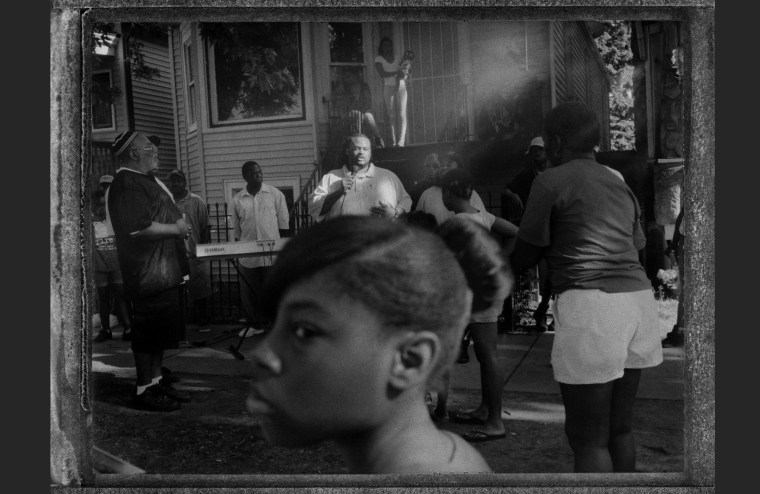In Chicago’s most violent neighborhoods, makeshift memorials to the young and dead sprout from street corners like wilting posies. Most often these victims are poor and black, cut down by gun violence that has long gripped America’s most hardened communities.
But the ties that bind this forlorn demographic cut much deeper than their income, age or race. The most important factor in predicting who among them might be next to die could be found within a person’s network of friends.
“Homicide is socially contagious, and association with people engaged in risky behaviors—like carrying a firearm and engaging in criminal activities—increases the probability of victimization,” a pair of Yale University sociologists wrote in a study released this month entitled, Network Exposure and Homicide Victimization in an African American Community, published in the American Journal of Public Health.
“Generally, you can’t catch a bullet from just anyone,” Andrew Papachristos, one of the authors told The Chicago Sun-Times. “Your relationship with the people involved matters. It’s not unlike needle sharing or unprotected sex in the spread of HIV.”
Papachristos and co-author Christopher Wildeman pored over homicide and arrest records between 2006 and 2011, analyzing a network of 3,718 high-risk individuals who had committed crimes together. The individuals lived within a six-mile area in a high-crime neighborhood. The authors then modeled the odds of someone being shot and killed using individual characteristics, network position, and indirect exposure to homicide.
What they found was that 41% of all gun homicides in the neighborhood involved just 4% of the neighborhood’s population. They also found that the stronger the association between a person and a homicide victim, the greater the chance of that person becoming a victim as well.
Each social tie or "handshake" removed from a homicide victim decreased the odds of being a homicide victim by 57%, according to the report.
For the network of people in the unidentified Chicago neighborhood studied by the sociologists, the prospect of steering clear of murder victims was particularly challenging. On average they lived about 501 feet from a location where someone was killed, with 75% of them living within 632 feet, or a city block, from where a killing occurred.
The neighborhood studied has all the hallmarks of a community ripe for violence: 33% of the residents lived below the poverty line; 52% of households were headed by single women; 43% of the population lacked a high school education. The neighborhood had one of the highest murder rates in the city between 2006 and 2011, 55.2 per 100,000 or 4 times higher than the average for other city neighborhoods.
“These results have considerable implications for our understanding of homicide reduction and prevention strategies,” the authors of the study wrote. “These findings imply that homicide spreads through specific types of behaviors and in specific segments of the population."
Chicago Police Superintendent Gary McCarthy told msnbc that his department has relied heavily on the work of various sociologists, including the authors of the network exposure report, to better identify people most at risk for gun violence.
McCarthy said a “small cadre of the population” is responsible for much of the gun violence in neighborhoods hardest hit by shootings and killings. To address that relatively small number of people -- often repeat, violent offenders --the police department developed a watch-list of the most vulnerable. The lists are then given to district commanders who pay visits, and issue warnings.
“We say, look, if you don’t change your lifestyle you’re either going to die or murder someone else or go to prison for the rest of your life,” McCarthy said. Police warn the people they visit that even a petty offense will “move them to the top of the list.”
“You tell them exactly what will happen this moment moving forward,” McCarthy said. The person is offered social services. They also receive a message from the community--perhaps a local leader or the parent of a murdered child--a so-called “voice of pain” who tells them how their actions are tearing up families and the community.
“We see a definite bounce in a good way, at least for a six-week period,” he said.
Following Chicago’s 506 murders last year, which led every other city in the country, McCarthy said the department has redoubled its efforts on the ground, including the use of intelligence, technology and mathematical probabilities. This year looks better. Chicago is currently on pace to have the lowest number of recorded homicides since 1965, with steep year-to-date declines in the number of shootings and killings from 2012.
The authors of the report say they hope the conclusions drawn from the study will help law enforcement officers better respond to gun violence.
“Although long-term homicide reduction strategies must address the fundamental inequalities that drive racial and socioeconomic disparities in violence, network analysis can guide immediate homicide reduction efforts by identifying specific points of intervention involved in crime epidemics,” the report reads.
